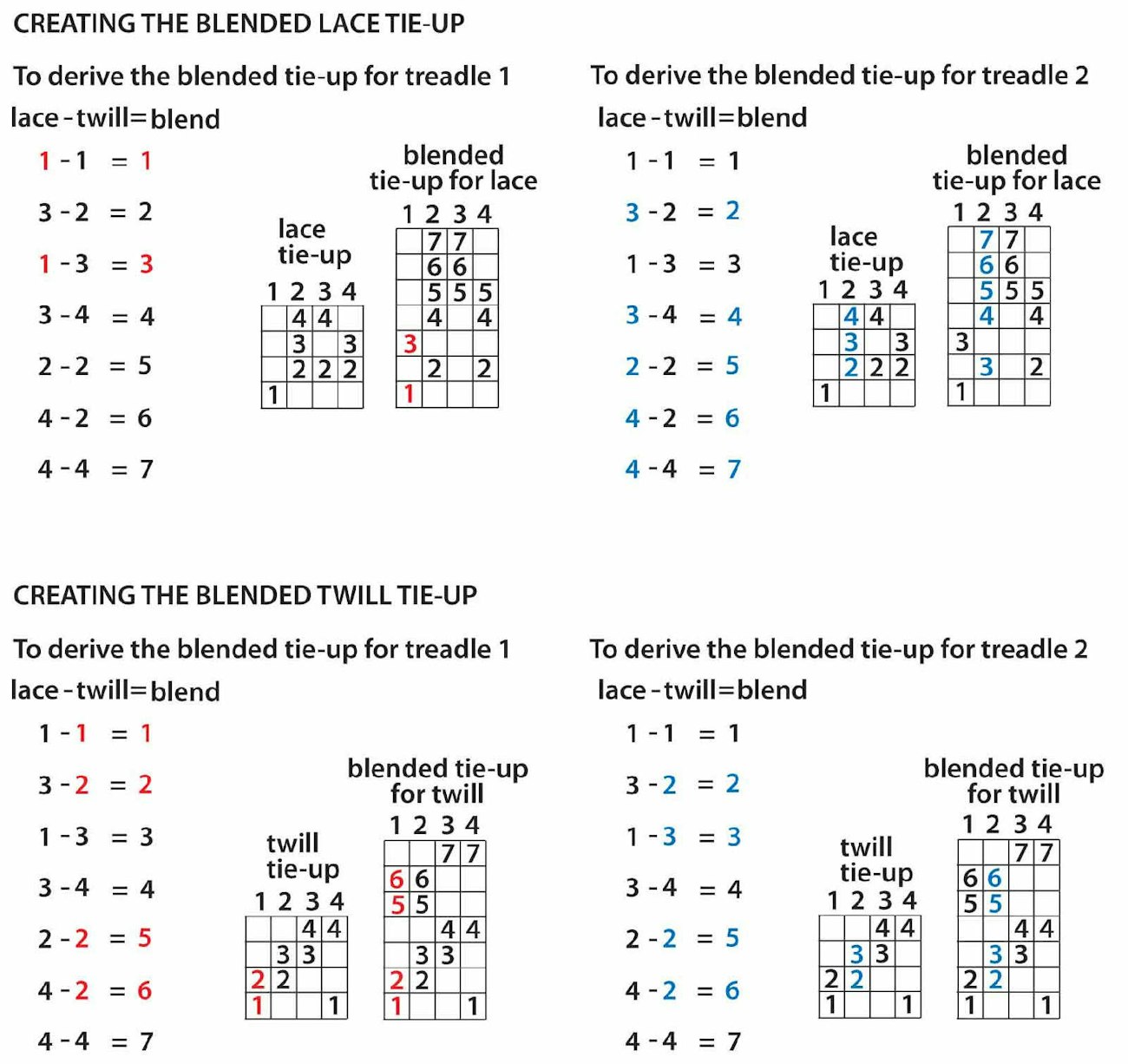Dear Madelyn,
I’ve followed your column for years and can’t tell you how many I’ve saved. Your article “Understanding Blended Drafts” in the May/June 2020 issue of Handwoven was clear—up to a point. I followed your directions for creating the blended threading. You are using essentially a substitution algorithm by creating a new shaft number for each different possible set of pairs from the two drafts you are combining (using combinatorics). With a Masters in math, this makes perfect sense. You are creating a transformation algorithm (forget that if you don’t have a head for transforms). It’s straightforward to create a blended threading.
What wasn’t obvious was how to create the tie-up. Could you elaborate? This is very important to me. Although an accomplished weaver, I’ve never wrapped my head around how to create my own tie-ups. A friend tried to walk me through it using a book, and it still amounted to “a miracle occurred, . . .” and there’s a tie-up. Your explanation of the threading was so clear, I’m hoping that this may finally be the key to unlocking tie-ups for me. I’d appreciate any elaborating you can do.
—Virginia
Hi Virginia!
I would be happy to elaborate, and since I don’t really know about algorithms, I’ll hope this makes sense.
If you look at Figure 3 in the article (“Understanding Blended Drafts,” May/June 2020, pages 18–19) and as shown here below, you can see at the left the three columns that give the original lace threading, the original twill threading, and then, after the equals sign, the new blended threading for both.
To create the tie-up that uses the blended threading to create lace, you look at the original lace tie-up first. Treadle 1 says to tie-up shaft 1 in the original lace threading. You then look at the blended threading to find the shaft number that all the threads on shaft 1 in the lace threading have become. Shaft 1 in the lace column is both shaft 1 and shaft 3 in the blended column. So the first treadle in the lace tie-up to use with the blended tie-up for lace is shafts 1 and 3. (These are all red in the diagram below.)
Then, for the second treadle, you need all the new blended-draft numbers for shafts 2-3-4 in the original lace tie-up. Shafts 2, 3, 4 are now 2, 4, 5, 6, 7 (blue).
And continue.
For the original twill tie-up, the first treadle needs to raise shafts 1 and 2. Look down the twill column and then find the new blended-draft numbers for shafts 1 and 2 (now 1, 2, 5, 6, in red); that becomes the new treadle 1 in the twill tie-up. For Treadle 2, shafts 2 and 3 become 2, 3, 5, 6 (in blue).
I think that although this explanation might make clear to you how to create a blended tie-up from the original tie-ups, it won’t be enough to explain tie-ups generally. A tie-up shows which shafts must be up and which down to create a particular interlacement given a particular threading. You have to know the relationship between the threading, shaft movement, and treadling order to really understand each individual tie-up. The best way to grasp an understanding about how all this works is to weave, following a variety of drafts and paying close attention to what the shafts are doing as you step on each treadle.
Hope this helps!
—Madelyn


